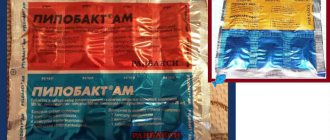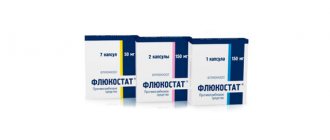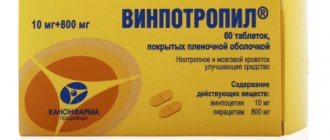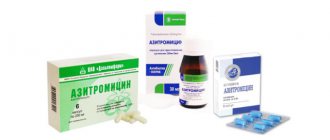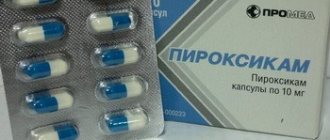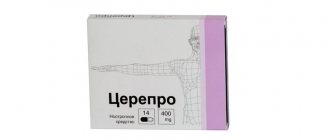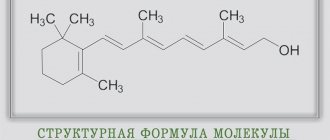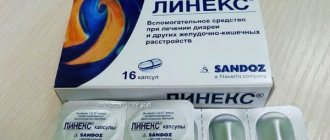Contraindications
Unfortunately, there are a number of restrictions on the use of Katadolon. The following conditions are contraindications for use:
- Intolerance to the drug and its components.
- Liver diseases, including previous ones.
- Tinnitus.
- Gallstone disease with symptoms of cholestasis.
- Myasthenic syndrome.
- Alcoholism.
- Pregnancy and lactation.
- Children's age (up to 18 years).
Use with caution in older patients.
Indications of the drug
Why is Katadolon prescribed? The indications for use are extensive, but it is strictly forbidden to use such a remedy without a doctor’s recommendation! The drug is prescribed for acute or chronic pain, which has varying severity and is provoked by various pathologies of the body.
WE RECOMMEND THE ARTICLE!
Andipal tablets are effective for high blood pressure and headaches. Read more >>
Most often, Katadolon is prescribed for pathologies of the musculoskeletal system. These include arthrosis and arthritis accompanied by pain.
Various musculoskeletal pains also disappear during treatment with the drug, especially if they are caused by muscle spasms against the background of damage to the vertebrae and joints.
The medicine has proven itself to be effective for headaches of various origins, as well as for fibromyalgia.
For oncological diseases that are accompanied by pain, a course of medication is recommended. It is prescribed even for moderate manifestations of pain - this allows you to reduce the use of stronger drugs. Other indications for therapy may include:
- pain from injuries, after operations;
- severe pain during menstruation - algomenorrhea;
- severe toothache, unpleasant consequences of tooth extraction.
Katadolon can eliminate the phenomena of painful shock, so it is often used in hospitals.
Dosage
The dosage should be selected by a neurologist. The frequency of administration, as well as the choice of prescribing the drug Katadolon or Katadolon forte, depends on many parameters.
As a rule, treatment of the disease begins with taking the drug Katadolon 100 mg 3 times a day. With severe symptoms of the disease, the total daily dosage can reach 600 mg (200 mg 3 times a day).
In elderly patients, the start of therapy is a double dose of the drug at a dose of 100 mg 2 times a day. If the analgesic effect is insufficient and the drug is well tolerated, the total daily dose can be increased to three hundred mg.
When using the drug Katadolon forte, a single dose of 1 tablet in the morning is recommended.
The course of treatment is determined by the effectiveness of the drug, the severity of the manifestations, taking into account the individual characteristics of the patient and is selected by the doctor. Long-term use of the drug is a reason to monitor the main biochemical parameters of the liver and kidneys.
Katadolon
Non-opioid analgesic of central action. Flupirtine is a representative of selective activators of neuronal potassium channels.
Flupirtine activates G protein-coupled neuronal inward rectifier potassium channels. The release of potassium ions causes stabilization of the resting potential and a decrease in the excitability of neuronal membranes. The result is indirect inhibition of NMDA receptors (N-methyl-D-aspartate), since the blockade of NMDA receptors by magnesium ions persists until depolarization of the cell membrane occurs (indirect antagonistic effect on NMDA receptors).
At therapeutically significant concentrations, flupirtine does not bind to α1-, α2-adrenergic receptors, 5HT1(5-hydroxytryptophan)-, 5HT2-serotonin, dopamine, benzodiazepine, opioid, central m- and n-cholinergic receptors.
This central action of flupirtine leads to the implementation of 3 main effects.
Analgesic effect
As a result of the selective opening of voltage-gated neuronal potassium channels with the concomitant release of potassium ions, the resting potential of the neuron is stabilized. The neuron becomes less excitable.
Flupirtine's indirect antagonism of NMDA receptors protects neurons from the influx of calcium ions. In this way, the sensitizing effect of increasing the intracellular concentration of calcium ions is mitigated.
Consequently, when the neuron is excited, the transmission of ascending nociceptive impulses is inhibited.
Muscle relaxant effect
The pharmacological effects described for the analgesic effect are functionally supported by an increase in the uptake of calcium ions by mitochondria, which occurs at therapeutically significant concentrations. The muscle relaxant effect results from the concomitant inhibition of impulse transmission to motor neurons and the corresponding effects of interneurons. Thus, this effect manifests itself mainly in relation to the entire musculature as a whole.
Effect of chronification processes
Chronification processes should be considered as processes of neuronal conduction due to the plasticity of neuronal function.
Through the induction of intracellular processes, the elasticity of neuronal functions creates conditions for the implementation of “inflating” type mechanisms, in which the response to each subsequent impulse is strengthened. NMDA receptors (gene expression) are largely responsible for triggering such changes. Indirect blockade of these receptors by flupirtine leads to suppression of these effects. Thus, unfavorable conditions are created for clinically significant chronic pain, and in the case of previously present chronic pain, for “erasing” pain memory through stabilization of the membrane potential, which leads to a decrease in pain sensitivity.
Pharmacokinetics
Suction
After oral administration, it is almost completely (up to 90%) and quickly absorbed from the gastrointestinal tract.
The concentration of the active substance in the blood plasma is proportional to the dose.
Metabolism
Metabolized in the liver (up to 75% of the dose taken) with the formation of the active metabolite M1 (2-amino-3-acetamino-6-[4-fluoro]-benzylaminopyridine) and M2. The active metabolite M1 is formed as a result of hydrolysis of the urethane structure (phase 1 of the reaction) and subsequent acetylation (phase 2 of the reaction). This metabolite provides on average 25% of the analgesic activity of flupirtine. Another metabolite (M2 - biologically inactive) is formed as a result of the oxidation reaction (phase 1) of para-fluorobenzyl followed by conjugation (phase 2) of para-fluorobenzoic acid with glycine.
Studies have not been conducted on which isoenzyme is predominantly involved in the oxidative pathway of destruction. Flupirtine should be expected to have only minor potential for interaction.
Removal
T1/2 is about 7 hours (10 hours for the main substance and metabolite M1), which is sufficient to provide an analgesic effect.
Excreted mainly by the kidneys (69%): 27% is excreted unchanged, 28% is excreted as metabolite M1 (acetyl metabolite), 12% is excreted as metabolite M2 (para-fluorohippuric acid) and 1/3 of the administered dose is excreted in in the form of metabolites with unknown structure. A small part of the dose is excreted from the body with bile and feces.
Pharmacokinetics in special clinical situations
In elderly patients (over 65 years old), compared with young patients, there is an increase in T1/2 (up to 14 hours with a single dose and up to 18.6 hours when taken for 12 days) and Cmax, respectively, in the blood plasma is 2-2.5 higher times.
Overdose
Symptomatically, an overdose of Katadolon is manifested by nausea, deterioration of general condition, impaired consciousness, emotional lability, and retardation of psychomotor reactions. Emergency help for an overdose of flupirtine consists of gastric lavage, prescribing adsorbents, and carrying out forced diuresis measures. There is no specific antidote.
Cases of deliberate intake of flupirtine in a dose of about 5 grams (50 capsules or approximately 13 tablets of Katadolon-Forte) have been described. Symptoms included nausea, rapid heartbeat, stupor, and dry mouth. After nonspecific therapy, the patient’s well-being improved, and there was no threat to vital functions.
Why was Katadolon discontinued?
The European Pharmacological Regulatory Authority (PRAC) has recommended stopping the marketing and use of the non-opioid analgesic catadolone. The drug is prescribed as a pain reliever in extreme cases, when taking other pharmacological products is impossible for some reason.
Previously, catadolon was prescribed with great caution. The drug was always prescribed with a number of conditions:
- it is unacceptable to take more than 14 days;
- if necessary, replace the non-opioid analgesic with other painkillers;
- carefully monitor the patient's well-being.
Ban on analgesic
A significant reason why catadolon was banned from use in modern therapeutic regimens is that the risks of taking the drug significantly outweigh the benefits of taking it.
The main threat is liver damage. Hepatocytes suffer not only from the oral form of the drug, but also from suppositories.
Another reason why catadolon was discontinued is that it is often used as a specific “relaxation” substance. The addiction set in quickly, and my health deteriorated.
special instructions
When taking Katadolon in patients with impaired liver and kidney function, it is important to monitor the relevant biochemical indicators of the functioning of these organs. You should remember about possible changes in reactions to the content of bilirubin and its metabolites in urine and blood. With prolonged use of the drug, especially in high doses, urine may turn greenish.
Catadolon may potentially lead to a decrease in the speed of psychomotor reactions. During treatment, you should limit driving and performing other potentially hazardous activities. You should also remember about the possible enhancement of the sedative effect when taken simultaneously with alcohol, muscle relaxants, and sedatives.
In elderly patients, patients with decreased levels of total protein, patients with severe renal or hepatic insufficiency, the maximum daily dose should not exceed 200-300 mg, divided into 2-3 doses.
The simultaneous use of Katadolon and other drugs that undergo metabolism in the liver should be limited. Particular attention in terms of the treatment of neurological diseases is given to the combined use of catadolone and finlepsin (carbamazepine), paracetamol.
Compound
Based on the attached instructions, the non-opioid analgesic “Katadolon” 100 mg contains the following substances:
- flupirtine maleate – active substance;
- gelatin and titanium dioxide;
- magnesium stearate and silicon dioxide;
- copovidone and calcium hydrogen phosphate dihydrate.
It is this multicomponent composition that allows the drug to have a pronounced analgesic effect.
They also sell a form with a higher content of the active substance - Katadolon Forte tablets 400 mg.
Side effects
The drug is quite safe and well tolerated. The main side effects are as follows:
- General weakness, fatigue, dizziness, gastrointestinal problems (heartburn, nausea, less commonly vomiting, indigestion, flatulence), sweating are common and very common.
- Allergic reactions and individual intolerance to the drug and its components are relatively rare.
- Rarely and very rarely, increased activity of liver enzymes, drug-induced liver damage, disturbances of consciousness, hearing and vision impairment were observed.
Almost all side effects are dose-dependent. Timely dose adjustment or discontinuation of the drug led to the disappearance of all side effects.
What is the shape
In the pharmacy chain, the medicine "Katadolon", the instructions for use provide such information, are presented as yellowish biconvex oval tablets. The presence of inclusions is acceptable; there is a mark on one side. Packing in special protective blisters of 7 pcs., 10 pcs. or 14 pcs.
There is also a capsule form with a uniform reddish color. Inside contains powdery contents - yellowish or greenish in color. Packing in cardboard packs of 30 pcs., or 50 pcs.
The optimal form is recommended by the attending physician, based on the diagnosed disease.
What are the analogues of the drug "Katadolon"
A complete analogue is “Katadolon Forte”.
The category of painkillers includes analogues of action:
- Prosidol.
- Tiapridal.
- Fentanyl.
- Methindol retard.
- Fendivia.
- Tramadol.
- Dexalgin.
- DHA Continus.
- Askaff.
- Ketonal Duo.
- Ketalgin.
- Methindol.
- Rapten Duo.
- Flamax forte.
- Transtek.
- Dikloberl.
- Ketanov.
- Stadol.
- Lidocaine.
- Zaldiar.
- Flamax.
- Promedol.
- Bupranal.
- Recofol.
- Moradol.
- Tramal.
- Nopan.
- Toradol.
- Tramundin retard.
- Dimexide.
- Dipidolor.
- Morphine.
- Protradon.
- Skenan.
- Tramolin.
- Flugalin.
- Ketorolac.
- Durogesic.
- Tiapride.
- Dolak.
- Ketorol.
Undesirable effects
The drug is well tolerated by most people. There are periodically complaints that while taking the analgesic "Katadolon" a number of undesirable effects occur:
- increasing fatigue;
- persistent dizziness;
- general weakness;
- dyspeptic disorders;
- gastralgia;
- cephalgia;
- increased anxiety;
- various allergic conditions - according to the urticaria variant.
If the above undesirable effects are not eliminated during therapy, the specialist will replace the medication.
